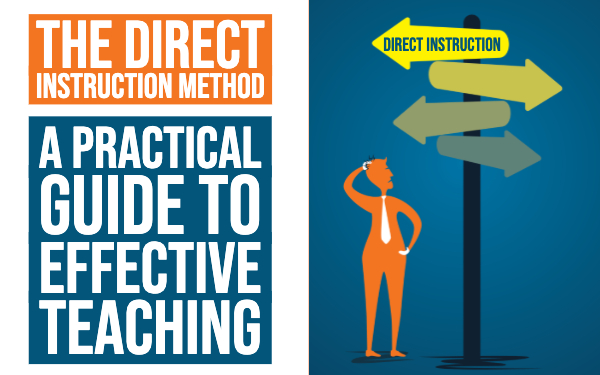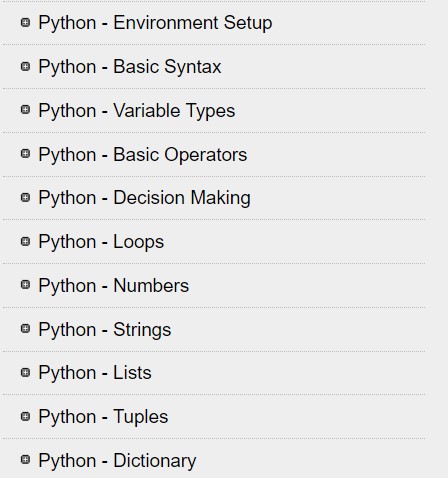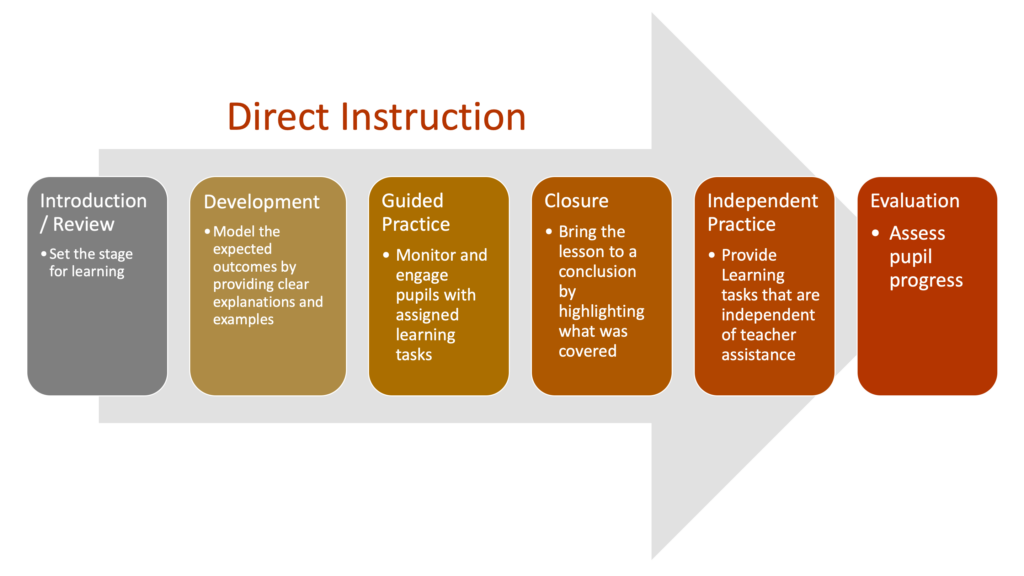
[PROMPT] EACH POST SHOULD INCLUDE AN OVERVIEW OF THE CHARACTERISTICS OF THE APPROACH AND A DISCUSSION OF HOW THAT APPROACH DOES OR DOES NOT ALIGN WITH YOUR CHOSEN TOPIC.
An instructor can carefully select one of the five learning environment approaches to create a productive classroom environment: namely direct instruction, inquiry-based learning, cooperative learning, experiential learning, and open pedagogies. This blog post will mainly focus on the analysis of the first learning environment approach, direct instruction, to determine if this learning approach is a perfect fit for my Pod’s interactive learning resource (“Basic Python for Beginners”). The post is going to start by defining direct instruction, providing examples of direct instruction, and discussing the relationship between direct instruction and a “Basic Python for Beginners”.
Let’s start by defining what is direct instruction. Direct Instruction is a teaching technique that emphasizes explicit guided instructions and small learning increments [1]. This learning approach is to ensure that all students can be successful in learning and developing their skills regardless of their background knowledge [2]. An example of direct Instruction is when an instructor introduces one learning concept at a time to reduce complexity and potential confusion. For instance, elementary math instructors separately introduce addition, subtraction, multiplication, and division of numbers one topic at a time instead of combining all the topics together. Once students progress through all the topics, they may be tested to evaluate their understanding. The following short video will recapitulate and provide insight into direct instruction [3].
Now we understand what direct instruction is, let’s discuss if this learning approach aligns with “Basic Python for Beginners”. As mentioned earlier, direct instruction is an efficient learning approach for learners without any background knowledge. This learning approach should work effectively for our “Basic Python for Beginners” since our learners are new programmers who have little experience in Python. Our Pod should split the Python learning topics into multiple smaller sub-topics to assist learners in digesting the contents [Figure 2]. Moreover, our Pod should include step-by-step videos to demonstrate how to write programming code in each sub-topic to direct students to write their Python programs. For each sub-topic, learners will be tested on their understanding via a graded quiz. As well, our Pod should apply a direct instruction approach for our final graded Python project. We plan to provide a step-by-step Python video to guide learners to create their final real-life Python application. A direct instruction approach is necessary to help learners complete their final project because some learners may not be able to complete the Python application without any guidance after only a few hours of their studies.

Overall, a direct instruction approach can align with our Pod’s learning resources topic. This small learning increment method will help students without any background in Python to progress and complete the lessons with ease. A step-by-step instruction technique also reduces learners’ confusion and ensures their understanding of basic Python.

References:
- L. Renard. Direct Instruction A Practical Guide to Effective Teaching. Retrieved from https://www.bookwidgets.com
- S. Engelmann. Basic Philosophy of Direct Instruction (DI). Retrieved from https://www.nifdi.org
- NIFDIINFO. Intro To DI: What is Direct Instruction?. Retrieved from https://www.youtube.com/watch?v=TkjxO3PSzwk
- Tutorialspoint. Python Tutorial. Retrieved from https://www.tutorialspoint.com
- LumenCandela. Direct Instruction. Retrieved from https://courses.lumenlearning.com
Leave a Reply